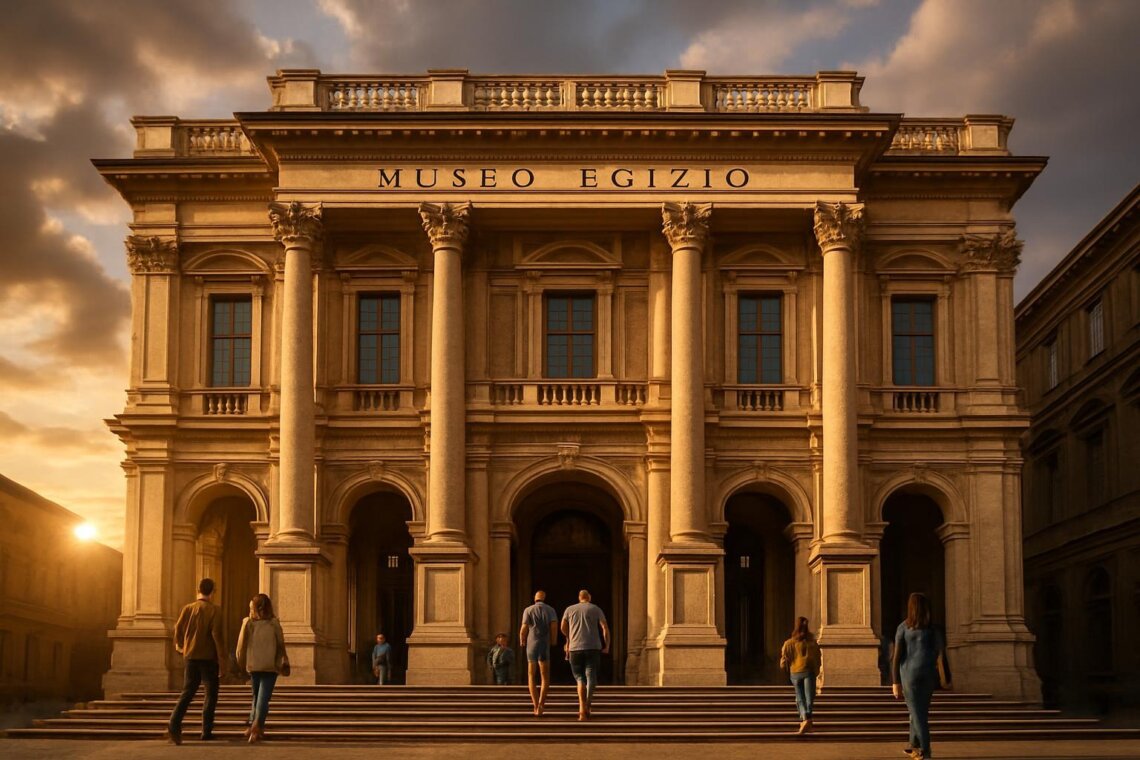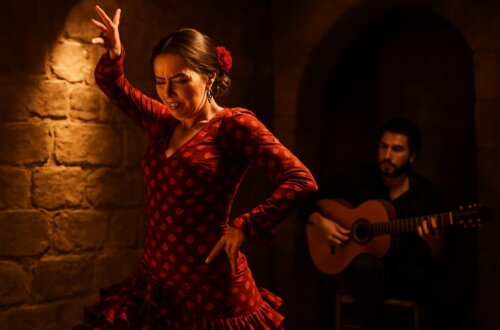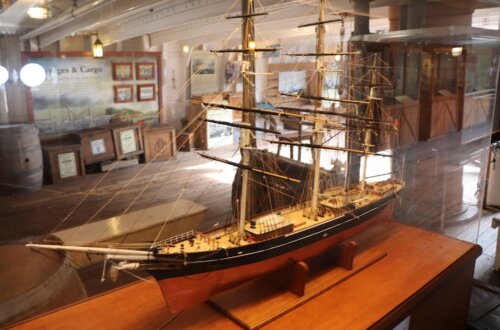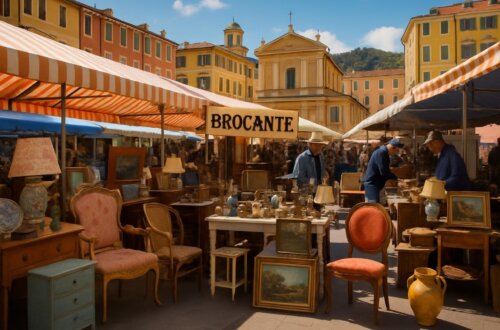
Egyptian Museum Torino: A Complete Visitor’s Guide to Italy’s Ancient Treasure
Egyptian Museum Torino: A Complete Visitor’s Guide to Italy’s Ancient Treasure
Introduction: Why the Egyptian Museum in Turin is a Must-See
Nestled in the elegant streets of Turin, Italy, lies one of the world’s most extraordinary collections of ancient treasures—the Egyptian Museum Torino. Home to the world’s second-largest collection of Egyptian antiquities, surpassed only by the Egyptian Museum in Cairo, this remarkable institution transports visitors on a mesmerizing journey through 3,000 years of pharaonic civilization.
For history enthusiasts, culture lovers, and curious travelers exploring Northern Italy, the Egyptian Museum Torino represents an unmissable opportunity to witness authentic artifacts from the land of the pharaohs without traveling to Egypt itself. From intricately decorated sarcophagi to priceless papyrus manuscripts, this museum offers an intimate encounter with one of humanity’s most fascinating civilizations.
This comprehensive guide will unveil everything you need to know about visiting the Egyptian Museum Torino: its fascinating history, unmissable highlights, practical visitor information, ticketing details, and expert tips to maximize your experience. Whether you’re planning a quick cultural stop or an in-depth exploration of ancient Egypt, this guide ensures you’ll make the most of your visit to Turin’s crown jewel.
The Egyptian Museum Torino: History and Importance
A Pioneer in Egyptology
The Egyptian Museum Torino holds the distinguished honor of being the world’s oldest museum dedicated exclusively to Egyptian culture, established in 1824. This groundbreaking institution emerged during a period of intense European fascination with ancient Egypt, following Napoleon’s Egyptian campaign and the decipherment of the Rosetta Stone.
The museum’s founding story begins with King Charles Felix of Sardinia, who acquired the extensive collection of French consul Bernardino Drovetti. This initial acquisition of over 8,000 artifacts formed the museum’s core collection, establishing Turin as an unexpected center for Egyptological studies in Europe.

Legendary Figures Behind the Collection
Two remarkable individuals shaped the museum’s legendary status: Giovanni Battista Belzoni and Ernesto Schiaparelli. Belzoni, often called the “Great Belzoni,” was an Italian explorer whose dramatic discoveries in Egypt during the early 19th century captured global imagination. His theatrical background and towering stature (he stood over six feet tall) made him a celebrity archaeologist of his era.
Ernesto Schiaparelli, the museum’s director from 1894 to 1927, revolutionized the institution through systematic archaeological expeditions. His methodical approach and diplomatic skills secured extraordinary artifacts for Turin, including the intact tomb of Kha and Merit—one of the museum’s most prized possessions.
International Recognition and Research Contributions
The Egyptian Museum Torino has contributed immensely to Egyptological research worldwide. Its scholars have published groundbreaking studies on ancient Egyptian daily life, religious practices, and technological innovations. The museum’s papyrus collection, in particular, has provided crucial insights into ancient Egyptian literature, medicine, and administrative systems.
UNESCO has recognized the museum’s exceptional value in preserving and interpreting ancient Egyptian heritage for future generations, cementing its position among the world’s most important cultural institutions.
Highlights of the Egyptian Museum Collection
Magnificent Statues of Pharaohs
The museum’s statue collection represents some of the finest examples of ancient Egyptian royal sculpture outside Egypt. The colossal granite statue of Ramses II dominates the ground floor, its imposing presence immediately conveying the power and divine authority of Egypt’s most famous pharaoh. Standing nearly five meters tall, this masterpiece showcases the sophisticated artistic techniques that made Egyptian sculptors legendary.
The statue of Seti II, Ramses II’s successor, demonstrates the continuity of artistic excellence during the Nineteenth Dynasty. These monumental works aren’t merely decorative—they served as eternal dwellings for the pharaohs’ spirits, embodying complex religious beliefs about death and immortality.

Precious Papyrus Collection
The museum’s papyrus collection includes some of the world’s most important ancient Egyptian texts. The Book of the Dead manuscripts provide intimate glimpses into Egyptian beliefs about the afterlife, featuring detailed instructions for navigating the underworld and achieving eternal life.
These fragile documents, some dating back over 3,000 years, showcase the evolution of Egyptian writing and religious thought. The vibrant illustrations accompanying the hieroglyphic texts reveal the artistic sophistication of ancient Egyptian scribes and painters.
Mummies and Sarcophagi: Windows to Eternity
The museum houses an exceptional collection of mummies and sarcophagi representing both royal and private burials. These aren’t macabre curiosities but profound expressions of ancient Egyptian beliefs about life, death, and resurrection. The elaborate mummification process, taking up to 70 days to complete, demonstrates the ancient Egyptians’ advanced understanding of preservation and their unwavering faith in eternal life.
The decorated sarcophagi tell stories through their intricate artwork, depicting the deceased’s journey through the afterlife and their hoped-for reunion with the gods. Each coffin represents a unique individual’s beliefs, social status, and personal relationships with the divine.
The Tomb of Kha and Merit: A Time Capsule
The Tomb of Kha and Merit stands as the museum’s most extraordinary treasure—a completely intact burial chamber discovered by Ernesto Schiaparelli in 1906. This remarkable find provides an unparalleled window into ancient Egyptian burial practices and daily life during the Eighteenth Dynasty.
Kha, an architect who worked on royal tombs in the Valley of the Kings, and his wife Merit were buried with an astounding array of personal belongings: furniture, clothing, jewelry, food offerings, and even cosmetics. The preservation quality is so exceptional that visitors can observe details of ancient Egyptian craftsmanship that would typically be lost to time.

Everyday Life Artifacts: Beyond the Pharaohs
While royal artifacts capture immediate attention, the museum’s everyday life collection reveals the human side of ancient Egypt. Delicate jewelry demonstrates the sophisticated metalworking and gem-cutting skills of ancient craftsmen. Pottery vessels, cooking utensils, and agricultural tools show how ordinary Egyptians lived, worked, and celebrated.
Children’s toys, including wooden dolls and board games, remind visitors that ancient Egyptian children played and learned much like children today. These intimate objects create emotional connections across millennia, making ancient Egypt feel remarkably relatable and human.
Must-See List for Visitors
- Ramses II Statue: The museum’s iconic centerpiece
- Tomb of Kha and Merit: Complete burial chamber with original artifacts
- Book of the Dead Papyri: Ancient religious texts with colorful illustrations
- Seti II Statue: Royal sculpture masterpiece
- Mummy Collection: Royal and private mummies with decorated sarcophagi
- Jewelry Display: Exquisite ancient Egyptian goldwork and precious stones
- Daily Life Gallery: Tools, furniture, and personal items from ordinary Egyptians
Egyptian Museum Torino: Visitor Information and Practical Guide
Location and Accessibility
The Egyptian Museum Torino occupies a prime location at Via Accademia delle Scienze, 6, in Turin’s historic city center. This central position makes it easily accessible on foot from most major hotels and tourist attractions in the city center, particularly the elegant Piazza San Carlo, just a five-minute walk away.
The museum building itself is an architectural marvel—a neoclassical palace that provides a dignified setting for the ancient treasures within. The contrast between Italian architectural elegance and ancient Egyptian artifacts creates a unique cultural dialogue that enhances the visitor experience.
Opening Hours and Seasonal Schedule
Current Opening Hours (2025):
- Tuesday to Sunday: 9:00 AM – 6:30 PM
- Monday: Closed (except during peak tourist seasons and holidays)
- Last Entry: 5:30 PM
- Extended Hours: During summer months (July-August), the museum remains open until 7:30 PM on weekends
Holiday Schedule: The museum follows a modified schedule during Italian holidays and the Christmas season. Always check the official website before visiting to confirm current hours and any temporary closures.
Tickets and Pricing Information
2025 Ticket Prices:
- Adult Ticket: €15 (includes access to all permanent exhibitions)
- Reduced Ticket: €11 (students aged 15-25, seniors over 65, groups of 15+)
- Free Entry: Children under 14, disabled visitors with companion, tour guides with license
- Special Exhibitions: Additional €5-8 depending on the exhibition
Money-Saving Tips:
- Online Booking: Save €2 per ticket when booking online in advance
- Torino+Piemonte Card: Free entry plus discounts at other Turin attractions
- Family Packages: Special rates for families with children
Booking Recommendations: During peak tourist seasons (April-October) and holidays, advance online booking is strongly recommended to avoid disappointment and long queues.
Guided Tours and Audio Options
English-Speaking Guided Tours:
- Standard Tours: Daily at 11:00 AM and 3:00 PM (€25 per person)
- Private Tours: Available by appointment (€150 for up to 8 people)
- Family Tours: Specially designed for children aged 6-12, featuring interactive elements and storytelling
Self-Guided Options:
- Official Museum App: Free download with audio commentary in 6 languages
- Audio Guide Rental: €5 at the museum entrance, available in English, French, Spanish, German, and Japanese
- QR Code System: Interactive displays throughout the museum provide additional information when scanned
How to Get to the Egyptian Museum in Turin
Walking from Turin City Center
The Egyptian Museum’s central location makes it easily accessible on foot from most Turin accommodations. From Piazza San Carlo, Turin’s elegant “drawing room,” it’s a pleasant 400-meter walk (approximately 5 minutes) through historic streets lined with cafés and boutiques.
From Piazza Castello, the city’s main square, follow Via Po towards the university district—the museum appears on your right after a 7-minute walk. This route passes several historic buildings and provides excellent photo opportunities of Turin’s baroque architecture.
Public Transportation Options
Metro and Tram Access:
- Nearest Metro Station: Porta Nuova (Line 1) – 8-minute walk to the museum
- Tram Lines: Lines 4, 13, and 15 stop at “Accademia Albertina,” directly in front of the museum
- Bus Routes: Buses 11, 27, 51, and 57 serve the museum area
Tickets: A single public transport ticket costs €1.70 and remains valid for 100 minutes, allowing transfers between different transport modes.
Driving and Parking Information
While driving in Turin’s historic center is possible, public transportation or walking is recommended due to limited traffic zones (ZTL) and parking restrictions.
Nearby Parking Options:
- Parking Duomo: Covered garage, 10-minute walk (€2.50/hour)
- Piazza San Carlo Parking: Underground facility, 5-minute walk (€3/hour)
- Street Parking: Limited blue zones available (€1.50/hour, maximum 2 hours)
Important Note: Many Turin streets have restricted access during business hours. Check signage carefully to avoid fines.
Tips for Visiting the Egyptian Museum Torino
Optimal Visiting Times
Best Days: Tuesday through Thursday typically offer the most comfortable viewing experience with smaller crowds. Weekend visits are popular but can become crowded, especially during the afternoon.
Recommended Hours: Arriving when the museum opens at 9:00 AM provides the most peaceful experience. The afternoon rush (2:00-4:00 PM) coincides with tour group arrivals, making galleries more crowded.
Seasonal Considerations: Spring (April-May) and early fall (September-October) offer the perfect balance of pleasant weather and manageable tourist numbers.
Planning Your Visit Duration
Minimum Visit: 2 hours covers the main highlights for visitors with limited time Recommended Visit: 3-4 hours allows thorough exploration of major galleries and special exhibitions Enthusiast Visit: Full day for archaeology students, history buffs, and repeat visitors interested in detailed study
Strategy Tip: Start with the ground floor’s monumental statues, then proceed chronologically through the upper floors to understand the evolution of Egyptian civilization.
Accessibility and Family-Friendly Features
The Egyptian Museum Torino prioritizes accessibility for all visitors:
Wheelchair Access: Full accessibility throughout the museum, including elevators to all floors and wheelchair-accessible restrooms Family Facilities: Baby changing rooms, stroller parking area, and children’s activity booklets available at reception Sensory Considerations: Quiet hours on Tuesday mornings for visitors with sensory sensitivities
Photography Guidelines
Photography Policy: Non-flash photography is permitted in most areas for personal use. Flash photography and tripods are prohibited to protect the artifacts and ensure visitor safety.
Social Media Tips: The museum encourages sharing your visit on social media using #MuseoEgizioTorino. The statue of Ramses II provides the most impressive backdrop for photos.
Dining Options Nearby
Museum Café: Located on the ground floor, offering light meals, Italian coffee, and snacks (9:00 AM – 6:00 PM)
Nearby Restaurants:
- Caffè Torino (2-minute walk): Historic café famous for its aperitivos and traditional Piedmontese dishes
- Ristorante Solferino (5-minute walk): Upscale dining featuring regional specialties and excellent wine selection
- Pizzeria da Asporto (3-minute walk): Casual dining perfect for families with authentic Italian pizza
Nearby Attractions in Turin
Piazza Castello: The Historical Heart
Just a 7-minute walk from the Egyptian Museum, Piazza Castello serves as Turin’s ceremonial center and architectural masterpiece. This expansive square showcases the city’s royal heritage through its elegant palaces, arcades, and the imposing Palazzo Reale.
The piazza connects several major attractions and provides an excellent starting point for exploring Turin’s historic center. Street performers, outdoor cafés, and seasonal markets create a vibrant atmosphere that captures the essence of Italian urban life.
Mole Antonelliana & Cinema Museum
Turin’s most recognizable landmark, the Mole Antonelliana, houses the world’s most important cinema museum. This towering 19th-century structure offers panoramic views of the city and the Alps from its observation deck.
The National Cinema Museum inside presents an immersive journey through film history, featuring interactive exhibits, vintage equipment, and tributes to Italian cinema masters like Federico Fellini. The combination ticket for the Egyptian Museum and Cinema Museum offers excellent value for culture enthusiasts.
Royal Palace of Turin: UNESCO Heritage Site
The Royal Palace of Turin (Palazzo Reale) represents one of Italy’s most significant royal residences and a UNESCO World Heritage site. Former home to the House of Savoy, Italy’s royal family, the palace showcases opulent baroque and rococo interiors that rival Versailles.
The palace’s armory contains one of the world’s most important collections of ancient weapons and armor, creating an interesting historical counterpoint to the Egyptian Museum’s ancient artifacts.

Creating Your Perfect Turin Day Itinerary
Morning (9:00 AM – 12:30 PM): Begin at the Egyptian Museum when it opens for the best viewing experience
Lunch (12:30 PM – 2:00 PM): Enjoy traditional Piedmontese cuisine at a nearby restaurant
Afternoon (2:00 PM – 5:00 PM): Explore the Royal Palace or ascend the Mole Antonelliana
Evening (5:00 PM – 7:00 PM): Stroll through Piazza San Carlo for aperitivo and shopping
Dinner: Experience Turin’s renowned cuisine at a traditional osteria
This itinerary combines ancient history, royal grandeur, panoramic views, and culinary delights for a perfect Turin cultural experience.
Why Visit the Egyptian Museum Torino?
Unique Cultural Value
The Egyptian Museum Torino offers something truly special among European museums—an exclusively Egyptian collection of unparalleled quality and comprehensiveness. Unlike general museums with Egyptian sections, this institution provides deep, focused exploration of pharaonic civilization in an intimate setting.
The museum’s Italian setting creates a unique cultural dialogue between ancient Egyptian and Italian artistic traditions, offering perspectives unavailable elsewhere. This fusion of cultures enriches the visitor experience and provides fresh insights into both civilizations.
Perfect for Diverse Travelers
History Lovers: Comprehensive collections spanning 3,000 years of Egyptian civilization Families: Interactive exhibits, family tours, and educational programs designed for children Students: Research facilities, specialized tours, and educational discounts Solo Travelers: Self-paced exploration with excellent audio guides and peaceful viewing environment
Ancient Egypt Meets Italian Elegance
The museum embodies a perfect marriage of ancient Egyptian mystique and Italian sophistication. The neoclassical building provides an elegant backdrop that enhances rather than competes with the ancient artifacts. This harmonious blend creates an atmosphere of reverence and wonder that transforms a simple museum visit into a transformative cultural experience.
Turin’s culinary scene, architectural beauty, and cultural richness provide the perfect complement to exploring ancient Egyptian civilization. Visitors can journey from pharaonic temples to baroque palaces, from ancient papyri to contemporary Italian art, all within a single day.
Conclusion
The Egyptian Museum Torino represents far more than a collection of ancient artifacts—it’s a journey through 3,000 years of human civilization that continues to inspire and educate visitors from around the world. As the world’s oldest museum dedicated exclusively to Egyptian culture and home to the second-largest collection of Egyptian antiquities outside Cairo, this Turin treasure offers an unparalleled window into one of humanity’s most fascinating civilizations.
From the imposing statue of Ramses II to the intimate personal belongings of Kha and Merit, every artifact tells a story that bridges the gap between ancient and modern worlds. The museum’s commitment to research, education, and preservation ensures that these stories will continue inspiring future generations of visitors, scholars, and dreamers.
Plan your visit to the Egyptian Museum Torino today and prepare to be transported across millennia and continents. Book your tickets in advance, especially during peak seasons, and consider combining your museum visit with Turin’s other magnificent attractions for a complete cultural experience.
Whether you’re a seasoned traveler, history enthusiast, or curious explorer, the Egyptian Museum Torino promises memories that will last a lifetime. Step into the world of the pharaohs—right in the heart of Turin—and discover why this exceptional museum has captivated visitors for nearly two centuries.
Ready to explore ancient Egypt in Italy? Visit the Egyptian Museum Torino’s official website to book your tickets and begin your journey through the ages.




